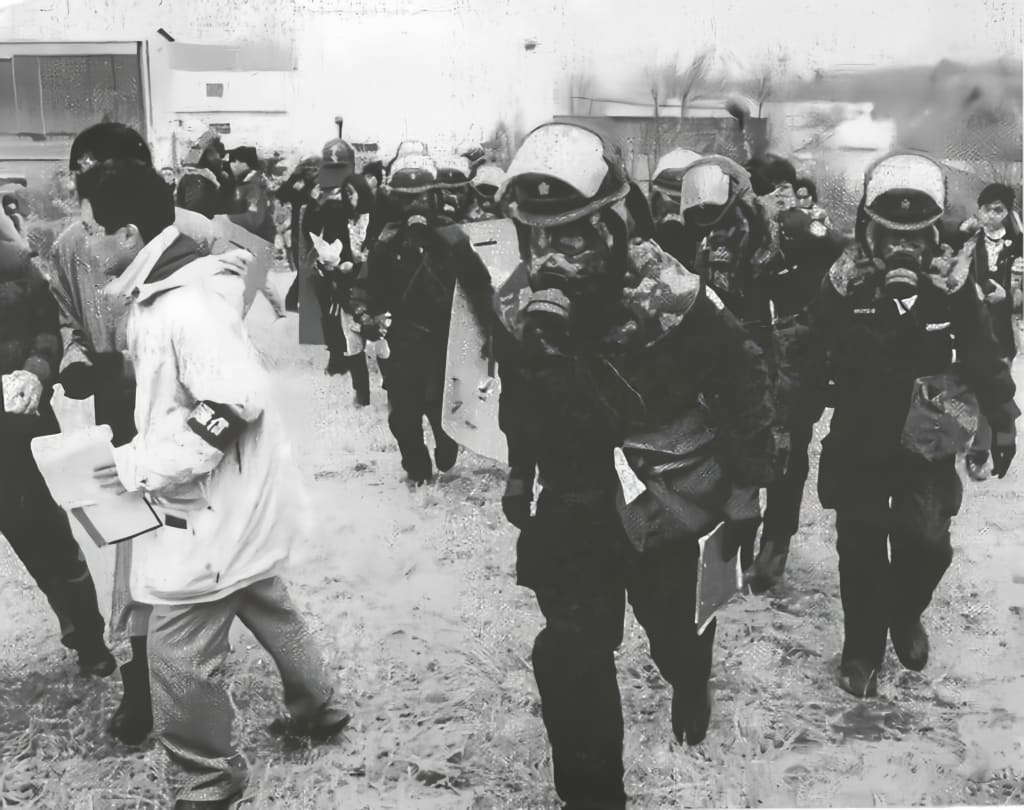
On March 20, 1995, a group of terrorists released the deadly nerve agent sarin in the Tokyo subway system during the morning rush hour, killing 13 people and injuring over a thousand. The incident, known as the Tokyo subway sarin attack, remains one of the deadliest acts of domestic terrorism in Japan's history.
How did a group of individuals manage to carry out such a devastating attack in one of the busiest cities in the world? What led them to resort to such extreme measures, and what were the consequences of their actions? In this blog post, we will explore the events surrounding the Tokyo subway sarin attack and examine the evidence and investigations that followed.
Background
The group responsible for the attack, known as Aum Shinrikyo, was a Japanese religious cult founded by Shoko Asahara in 1984. Asahara claimed to be a messiah and promised his followers spiritual enlightenment and salvation from the impending apocalypse.
Aum Shinrikyo rapidly gained a large following and established a number of businesses, including a yoga studio and a pharmaceutical company. However, the group's practices and beliefs became increasingly radical, and Asahara's prophecies of an impending apocalypse led him to order the group to prepare for a holy war against the Japanese government and its perceived enemies.
Preparation for the Attack
Aum Shinrikyo began to acquire the materials necessary to produce sarin, a deadly nerve agent that attacks the nervous system and can cause paralysis and death within minutes. The group established a chemical weapons manufacturing facility at their headquarters in Kamikuishiki, Yamanashi Prefecture, where they produced large quantities of sarin and other chemical weapons.
The group also conducted a number of small-scale attacks in the years leading up to the Tokyo subway sarin attack, including the release of sarin in the city of Matsumoto in 1994, which killed seven people and injured over 200.
The Attack
On March 20, 1995, members of Aum Shinrikyo boarded several trains on the Tokyo subway system during the morning rush hour. The attackers carried bags filled with sarin, which they punctured with sharpened umbrellas to release the deadly gas. The attacks took place on several different subway lines, and the victims were a mix of commuters and subway workers.
The effects of sarin exposure can be severe and immediate. Victims experienced symptoms including nausea, vomiting, blurred vision, and difficulty breathing. Many were left unconscious or convulsing on the subway platforms and trains.
Investigation
The Tokyo subway sarin attack was immediately recognized as a major incident, and emergency services were quickly mobilized to treat the victims. The Japanese government also launched a large-scale investigation into the attack, which led to the discovery of Aum Shinrikyo's chemical weapons manufacturing facilities and other evidence of the group's activities.
The investigation revealed that Aum Shinrikyo had been planning the Tokyo subway attack for several months and had conducted a number of trial runs in the weeks leading up to the attack. The group had also considered other potential targets, including the Tokyo Metropolitan Government Building and the Imperial Palace.
In the weeks and months following the attack, hundreds of members of Aum Shinrikyo were arrested, and the group's assets were seized. Shoko Asahara was eventually captured in May 1995 and later sentenced to death for his role in the attack and other crimes committed by the group.
Impact
The Tokyo subway sarin attack had a significant impact on Japanese society and the global community. The attack was the deadliest act of domestic terrorism in Japan's history and raised concerns about the potential for future attacks by extremist groups. The incident also led to increased scrutiny of religious cults and other extremist organizations in Japan.
In addition to the immediate impact of the attack, the Tokyo subway sarin attack also had long-term consequences for Japanese society. The incident exposed flaws in Japan's security and emergency response systems, and led to reforms to improve the country's ability to respond to future terrorist attacks.
The attack also had a lasting impact on the victims and their families, many of whom continue to suffer from physical and psychological trauma. In the years following the attack, a number of lawsuits were filed against Aum Shinrikyo and its leaders, seeking compensation for the victims and their families.
Conclusion
The Tokyo subway sarin attack remains a tragic and significant event in Japanese history, and serves as a reminder of the dangers of extremist ideologies and the importance of effective counterterrorism measures. The attack also underscores the need for ongoing efforts to address the root causes of violent extremism and to promote understanding and tolerance in our communities.
As we reflect on the Tokyo subway sarin attack, we must remember the victims and their families, and commit to preventing similar tragedies from occurring in the future. By working together to promote peace, understanding, and mutual respect, we can create a safer and more just world for all.





Comments
There are no comments for this story
Be the first to respond and start the conversation.